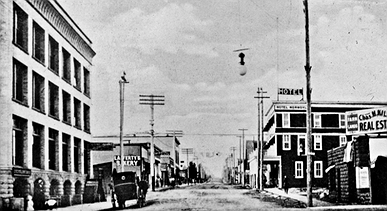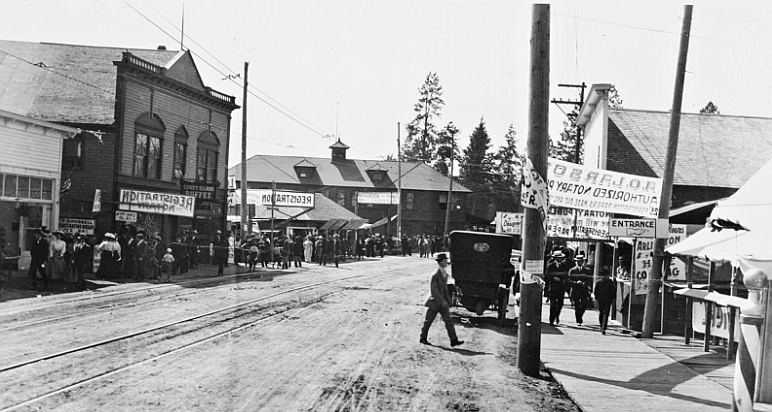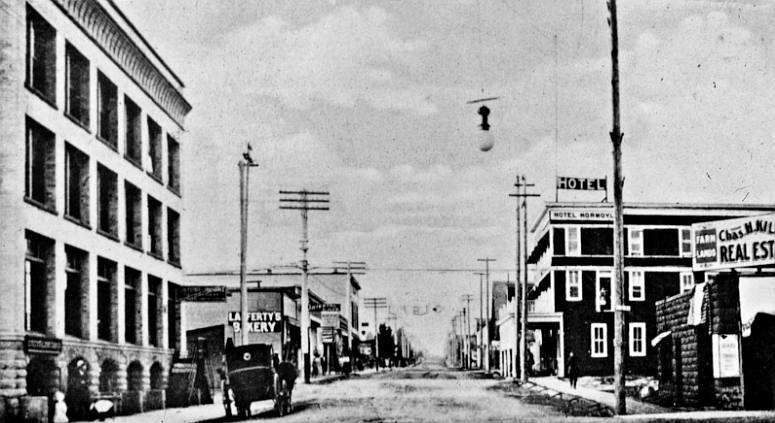MOVING HISTORY FORWARD: Ordinance No. 16 — Regulating construction of Coeur d’Alene’s early sidewalks
Sidewalks have been a major topic of discussion at recent meetings of the Coeur d’Alene City Council. The focus of the council’s deliberations has been Council Bill No. 25-1008. With 30% of the city now lacking sidewalks, accessibility issues need to be rectified. To address the problem, some council members have proposed amendments to city codes to establish “Priority Pedestrian Corridors,” thereby eliminating exemptions to the ordinance. Despite much discussion, the council has failed to reach a consensus and has postponed further consideration until their May meeting.
Inspired by the council’s discourse about the current sidewalk ordinance, the author decided to research the history of Coeur d’Alene’s sidewalks to learn how early leaders regulated them.
It all goes back to Ordinance No. 16, enacted by the Board of Trustees of the village of Coeur d’Alene shortly after incorporation in 1887. The new law was aimed at establishing an element of civility and permanence within the village’s business district. To that end, the trustees codified plans and standards for installing the pedestrian pathways and outlined procedures for approving and funding them.
As early as 1892, Editor Joseph E. Scott of the Coeur d’Alene Press reported that the village fathers were enforcing Ordinance 16 aggressively to compel the installation of wooden sidewalks along Sherman Avenue. The Press frequently posted notices detailing the locations of new sections of the walks and who was installing them.
Ordinance 16 mandated 8-foot-wide sidewalks made of wooden planks supported by 2-inch by 6-inch stringers. The planks were to be double-nailed to the street side and single-nailed to the building side stringers. Property owners could pay for sidewalks bordering their property using the ordinance’s plans and specifications without penalty. However, failure to install a sidewalk before a published deadline resulted in a special tax levied by the Committee on Streets and Sidewalks to pay for walkway installation.
Some property owners refused to pay the sidewalk tax or were deliberately delinquent, so the trustees referred cases to the city attorney for collection. In 1897, the County Tax Collector publicly listed sidewalk tax delinquents and threatened to auction off their properties if taxes weren’t paid.
Coeur d’Alene’s damp and cold climate accelerated the deterioration of the wooden pathways, thus requiring periodic repair and replacement. Since there were no clear guidelines for replacing damaged or rotting sidewalks, the board of trustees enacted Ordinance No. 16 in 1896, outlining steps for bringing walks back up to standard.
Around 1900, several western U.S. cities began experimenting with concrete sidewalks to replace wooden ones. Joseph Scott observed this development and advocated for concrete walks in Coeur d’Alene.
Several years passed, but in late 1907, the first cement walk was reportedly poured between Sherman Avenue and the alleyway on the west side of Second Street, adjacent to the Coeur d’Alene Bank and Trust building. The second reported walk was laid in early 1908 in front of the Dittemore Block, which is now home to Clark’s Jewelry.
Later that month, the city passed a new ordinance regulating the laying of concrete sidewalks and ordered the removal and replacement of all wood sidewalks with cement. Today’s council is thus continuing the city’s long history of working to provide safe pathways for its citizens.
 This Cardinell-Vincent postcard from the Museum of North Idaho collection shows what may well be Coeur d’Alene’s first cement sidewalk as it looked on the west side of Second Street from Sherman Avenue to the alley. The east side of the street appears to still have a wooden sidewalk running between the Charles Kildea Real Estate building and the Hotel Normoyle. The old Coeur d’Alene Bank building, which is adjacent to the cement walk, was recently demolished to make way for the new Coeur d’Alene Resort Tower.
This Cardinell-Vincent postcard from the Museum of North Idaho collection shows what may well be Coeur d’Alene’s first cement sidewalk as it looked on the west side of Second Street from Sherman Avenue to the alley. The east side of the street appears to still have a wooden sidewalk running between the Charles Kildea Real Estate building and the Hotel Normoyle. The old Coeur d’Alene Bank building, which is adjacent to the cement walk, was recently demolished to make way for the new Coeur d’Alene Resort Tower.



